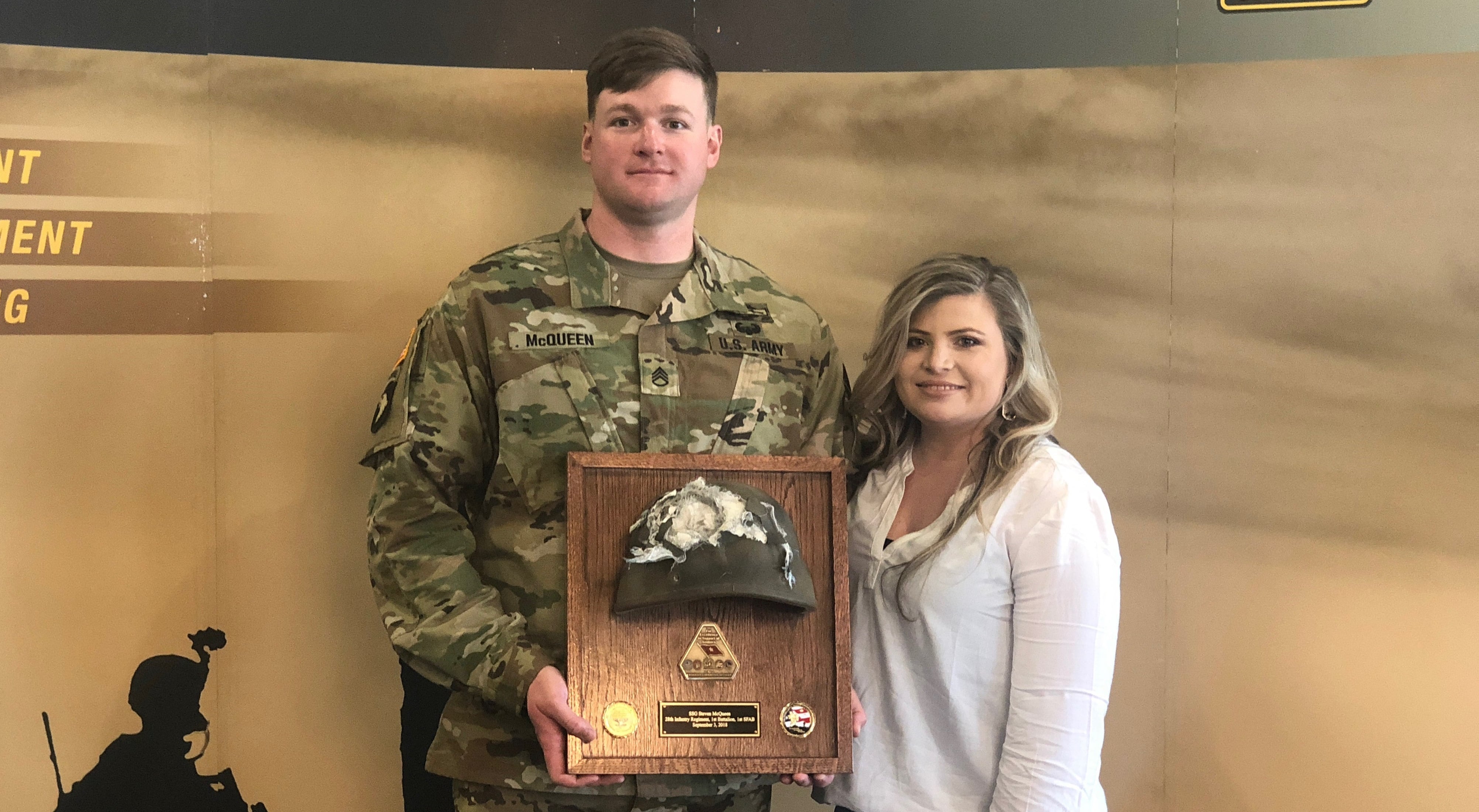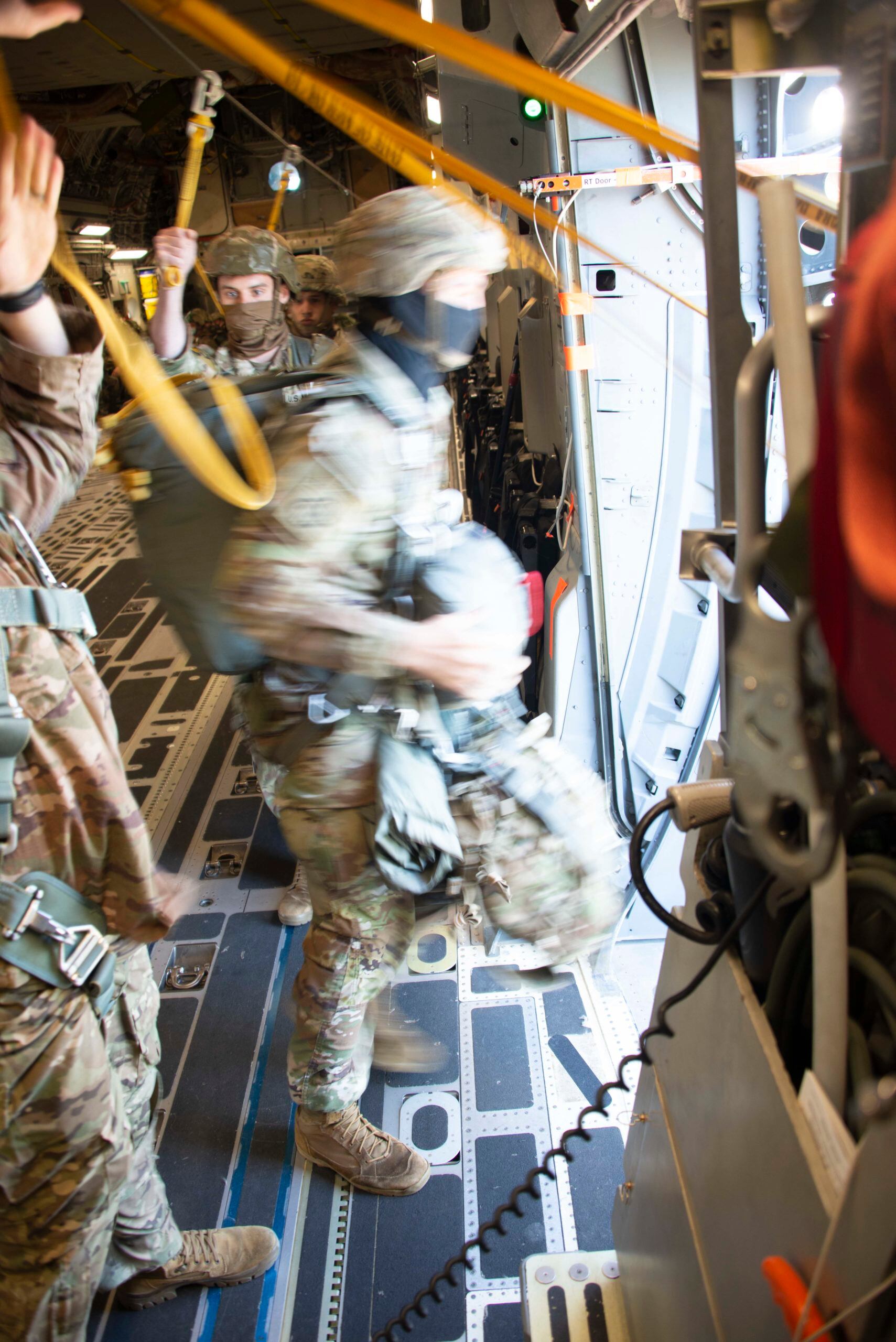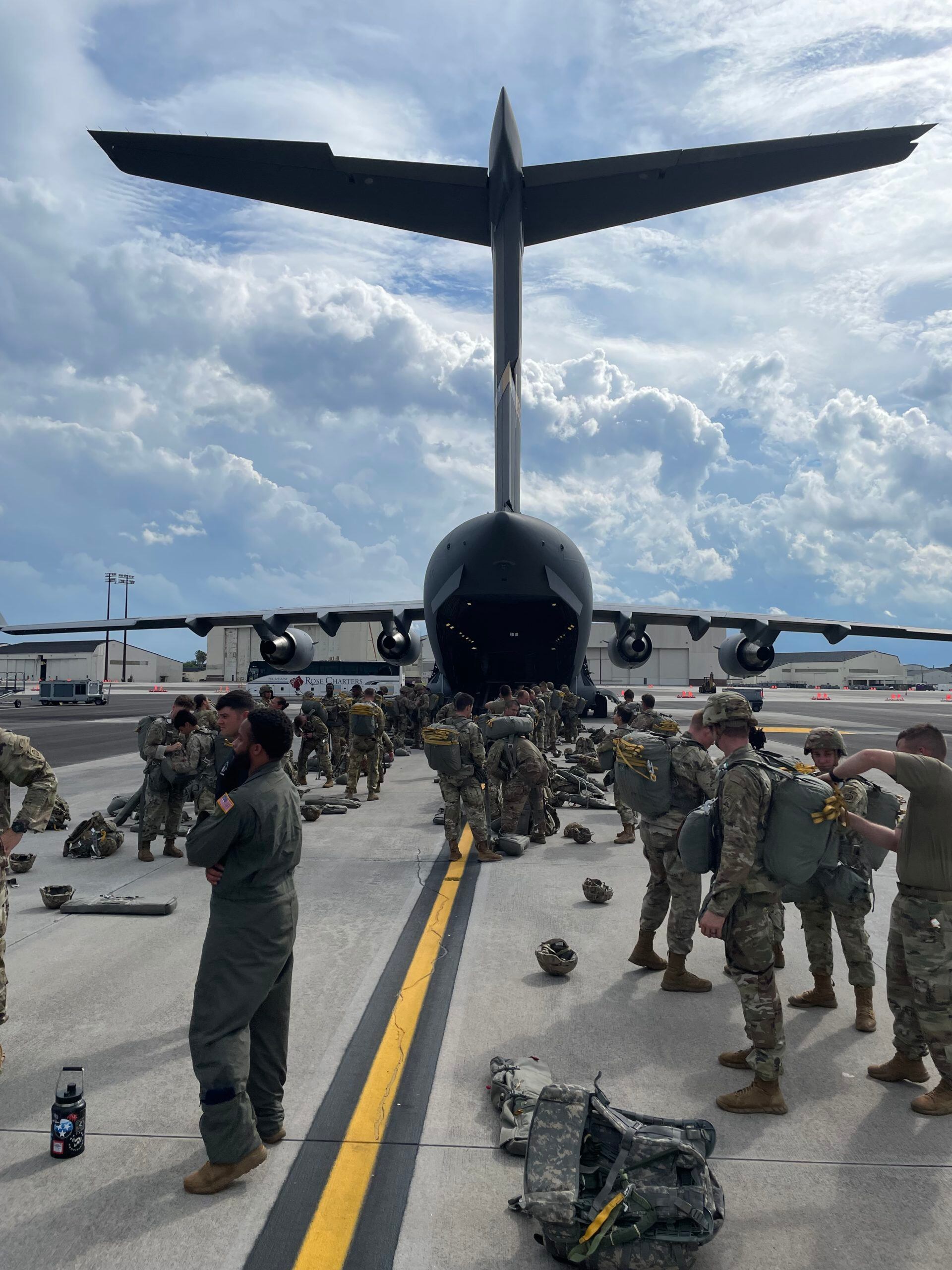Soldiers with the 82nd Airborne Division recently tested helmet sensors that researchers hope will lessen impact and trauma not only for paratroopers but for anyone wearing a helmet.
The division’s 2nd Brigade tested the Army Research Laboratory’s newest Head Impact Monitoring Sensors, according to an Army release.
Known as the Rate Activated Tether, or RAT, the helmet suspension will ultimately be used to increase “blunt impact protection for all combat helmets,” said Thomas Plaisted, ARL Materials Engineers Research lead.
But one way that researchers can measure impact to the head is in the mouth.
RELATED

They’re using a device known as the “Impact Monitoring Mouth guard,” or IMM as a check engine-type sensor, said Dr. Adam Bartsch, chief science officer for Prevent Biometrics.

Over this past year the group of researchers who work on IMM have been working with ARL to analyze how well the RAT impact absorption system performs by measuring force through the mouth guard.
In mid-July, paratroopers got a basic intro to the devices and then started jumping at Holland Drop Zone at Fort Bragg, North Carolina, according to the release.
The soldiers also did parachute landing falls, jump command practice and aircraft exits on ground sites from a mock door trainer for further data collection.

In the coming months, paratroopers will continue to use the mouth guard so that the research team can gather more data.
The research aims to prevent even mild traumatic brain injuries both in combat and in standard training.
Army Times reported in 2020 on how the World War I-era flat steel helmet with its wide, wrap around brim actually protects better from overhead blasts than modern helmets, according to a Duke University research paper.
But the current and future helmets also do their fair share of protecting.
Army Times also reported in 2019 the story of Army Staff Sgt. Bryan McQueen, who was near the end of his tour in Afghanistan with the 1st Security Forces Assistance Brigade in 2018 when machine gun fire erupted, sending a single round to the back of his helmet but not into his skull.
Todd South has written about crime, courts, government and the military for multiple publications since 2004 and was named a 2014 Pulitzer finalist for a co-written project on witness intimidation. Todd is a Marine veteran of the Iraq War.




